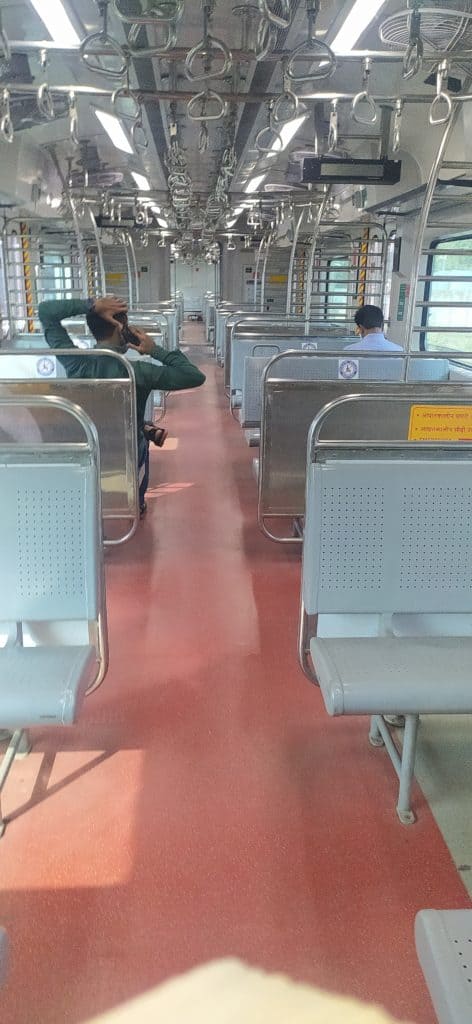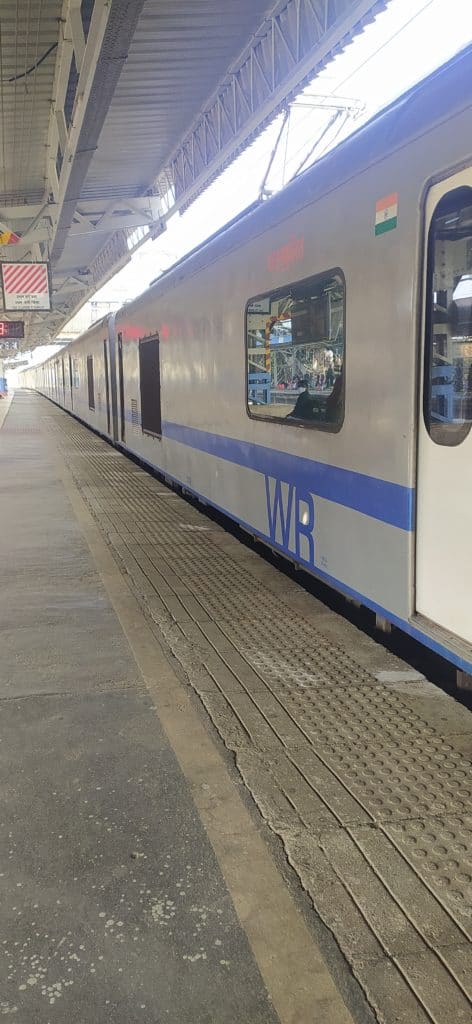Almost a year ago, on January 30 2020, air conditioning was introduced on some routes of the Central Railway network. This was meant to be an additional cog in Mumbai’s public transport wheel.
A year later, that experiment has all but failed.
On January 16, only 3 ticketed passengers and 200 monthly season ticket (MST) passengers were on the ten AC trains operational between CST and Kalyan stations. Result: revenue earned was just Rs 7610 till 5 pm.
Earlier, in the period from December 17 (when AC locals re-started after lockdown) and January 15, the Central Railways registered a remarkable losses with only 836 ticketed passengers and 11363 MST passengers taking to these services, earning a revenue of Rs 4,67,250.
This translates into 379 passengers daily on an average.

AC trains are very expensive
Air Conditioning was first introduced in local trains in Western Railways (WR) of Mumbai suburban train network on December 25, 2017.
The Western Raiways, which runs 10 services between Churchgate and Virar, seems to fare relatively better than CR in terms of revenue generation. But, they are no where close to expectation.
WR registers a daily average of 1197 passengers including all ten daily services and a monthly average rate of 0.35 lakh passengers. This average looks good when you consider that the per train capacity currently is 620 passengers due to social distancing restrictions.
In other times, a single AC train can ferry 5964 passengers including 1028 sitting capacity.
Ad campaigns to boost AC train usage
AC locals target users of App-based taxi services like OLA or Uber and other frequenting higher-end commuters, who are willing to shell out extra for a comfortable journey.
The CR released special media campaigns where it compared the travel and cost factors of the hired cabs vis-a-viz the AC locals and highlighted how the AC fares cost just 70 paise per km and a monthly season pass between CST and Kalyan cost only Rs 2135, 12 % lower than a cool cab, their ads underlined. https://youtu.be/VVhBsSWqu-A
Though regular trains have the option of a first class compartments, such compartments tend to get crowded and don’t promise even a sitting space during peak hours.
The AC locals are charged twice the fares of the first class season tickets; while the CST-Kalyan monthly season ticket (MST) cost Rs 2135, the first class MST for the same cost Rs 1105. However, while a first class single fare ticket between the stations cost Rs 165 by first class, the AC single fare was quite close at Rs 210.
The rates are justified if we consider how under priced the railways are. “While second class passengers pay Rs 0.2/ km, a metro charges Rs 3 / km and BEST charges Rs 1/km,” says Ashok Datar, a Transport analyst.

Metros VS AC local
Datar wonders why the city is spending almost Rs 1,50,000 crore in developing a metro network, when it would be much simpler to run AC locals on the existing train network.
Especially when, he says, while an AC coach costs four crore rupees, a Metro coach costs double the amount. “Currently, the AC ticket fares are higher, which deters the irregular passengers. The fare needs to be reduced to attract those preferring to go by cabs,” he says.
Datar also suggests that since many senior citizens prefer the AC locals, the railways could increase its frequency by tagging an AC coach to the regular trains, rather than run an entirely AC train. This will get many first class passengers to switch on to the AC trains. A CR spokesperson says that such a proposal was stuck down as their technical team said it was not feasible.
For the few passengers that do patronize these AC trains though, introduction of this service has been a huge boon, a relief from the sweat and smell of jostling crowds that have become the hallmark of train travel in Mumbai.
Vasai-based retired couple Vinay and Seema Raut, used to lug it out in regular train journeys when they went to work. But, post-retirement and post-lockdown when they had to travel to Dadar for a family emergency, they chose to travel by the AC local rather than bring out their own car. “This is a way better way of travelling,” says Seema Raut but “only thing is that they should increase its frequency.”